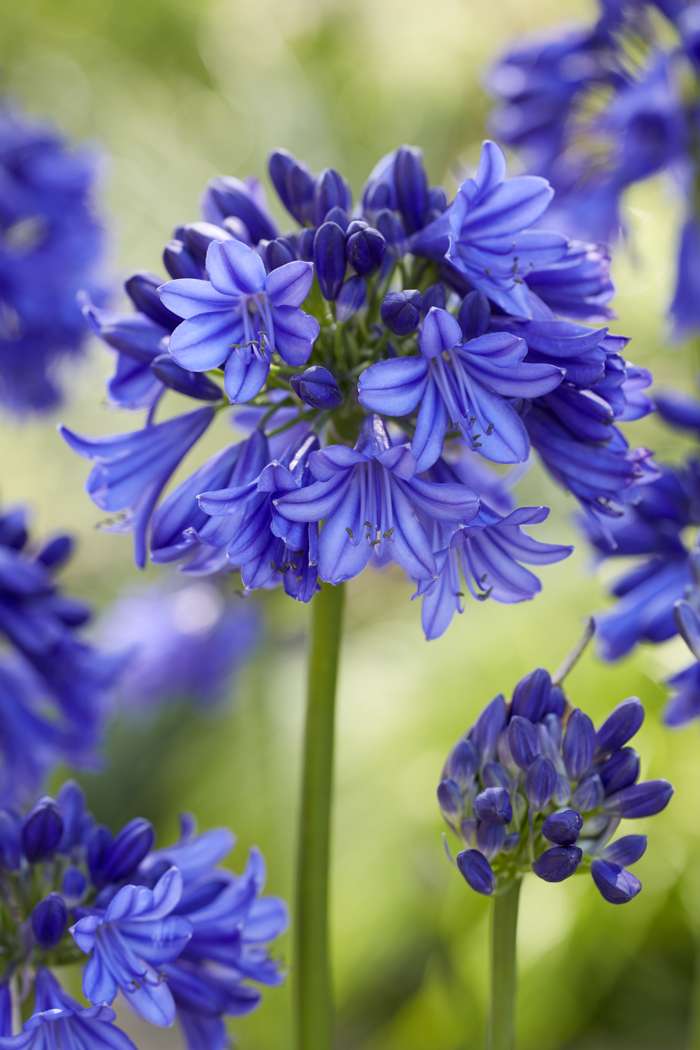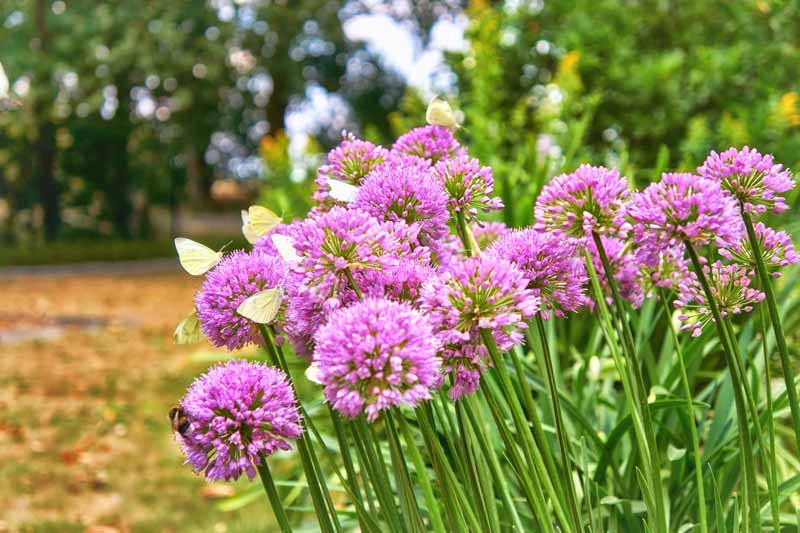Just how to Plant and Maintain Agapanthus in Your Yard
Just how to Plant and Maintain Agapanthus in Your Yard
Blog Article
Releasing the Secret to Successful Agapanthus Growing: Idea for a Flourishing Yard
In the realm of horticulture, growing agapanthus successfully calls for a tactical method that encompasses numerous aspects of plant care. With careful attention to information, one can unlock the keys to supporting these magnificent flowers, leading to a yard that prospers with appeal and vibrancy. By recognizing the nuances of agapanthus farming, one can produce an environment where these plants grow and flower abundantly. In the adhering to discussion, we will certainly explore important tips and techniques that will direct you in the direction of a thriving agapanthus yard, providing understandings into finest techniques, soil problems, watering methods, and more.
Growing Agapanthus: Best Practices
When planting Agapanthus, appropriate dirt prep work is important for ensuring successful development and advancement of these beautiful blossoms. Agapanthus, frequently referred to as Lily of the Nile or African lily, thrives in well-draining soil with a slightly acidic to neutral pH degree - Agapanthus. Prior to growing, it is crucial to change hefty clay soils with natural matter such as compost or peat moss to boost water drainage and provide important nutrients for the plants
To grow Agapanthus, choose a location that gets full sunlight to partial shade, as this will certainly advertise healthy and balanced development and bountiful flowering. Dig a hole two times the size of the plant's origin round and place the Agapanthus at the very same depth it was previously expanding. Delicately backfill the opening with soil, pushing down securely to eliminate any type of air pockets around the origins.
Water the freshly planted Agapanthus thoroughly and continue to keep the soil evenly moist, especially during the plant's active growing season. Agapanthus. Applying a well balanced plant food once a month can better sustain the plant's development and flowering. By complying with these best practices for planting Agapanthus, you can develop a stunning display of these exciting flowers in your yard
Perfect Dirt Issues for Agapanthus
For optimum growth and blooming success of Agapanthus plants, ensuring the dirt problems are optimal is critical. Agapanthus flourishes in well-draining soil with a somewhat acidic to neutral pH degree ranging from 6.0 to 7.0. This type of dirt permits for adequate water drain, stopping waterlogging which can cause root rot. To improve soil drainage, consider adding organic issue such as garden compost or peat moss when preparing the planting website. Furthermore, Agapanthus prefers dirt that is rich in nutrients, so incorporating a well balanced fertilizer throughout the growing season can advertise healthy growth and lively flowers.

Watering and Fertilizing Tips
To make sure healthy development and dynamic blossoms, proper watering and fertilizing techniques are crucial for effective Agapanthus farming. Agapanthus plants benefit from regular watering, particularly throughout the expanding period.
When it involves feeding Agapanthus, a well balanced fertilizer with equal components nitrogen, phosphorus, and potassium can be applied in the spring to promote healthy and balanced growth and flowering. Slow-release fertilizers are ideal for giving nutrients progressively over a prolonged duration. Stay clear of over-fertilizing, as this can result in too much vegetation growth at the expense of flowers.
Furthermore, integrating raw material like garden compost right into the soil can boost nutrient degrees and boost dirt structure, aiding in the overall health of the Agapanthus plants. By complying with these watering and feeding tips, garden enthusiasts can ensure their Agapanthus plants prosper and generate sensational screens of blossoms.
Trimming and Deadheading Techniques
Appropriate pruning and deadheading techniques play a crucial function in preserving the health and visual appeals of Agapanthus plants, enhancing the vital practices of watering and feeding for successful farming. Trimming Agapanthus involves removing spent blossom heads, yellowing or dead fallen leaves, and total shaping of the plant to advertise much better growth. Deadheading, the process of removing discolored blossoms, not only boosts the plant's look however additionally urges additional blooming.
When deadheading Agapanthus, it is advisable to snip off the flower stem at company website the base making use of sharp, clean shears. This process reroutes the plant's energy from seed manufacturing back right into origin and vegetation growth, advertising a healthier and much more durable plant. Normal deadheading can expand the flowering duration of Agapanthus and avoid self-seeding, which can bring about congestion.
In regards to trimming, Agapanthus usually take advantage of a light trim after flowering to tidy up the plant and motivate fresh development. Cutting down the invested blossom stems and eliminating any dead or damaged foliage aids maintain the plant's vigor and general appearance. Nevertheless, it is important to prevent reducing into the crown of the plant, as this can deteriorate its health and wellness.

Protecting Agapanthus From Vermins and Diseases
Executing efficient insect and illness monitoring approaches is crucial to guarding the wellness and vigor of Agapanthus plants in growing. Agapanthus are normally durable plants, however they can still fall victim to numerous bugs and illness if not effectively looked after. One common bug her response that affects Agapanthus is the Agapanthus borer, a caterpillar that passages right into the plant, triggering damage to the flowers and leaves. To avoid infestations, normal assessment of the plants is necessary. If borers are discovered, they can be by hand eliminated, or insecticidal soap can be made use of as a control procedure.
In enhancement to insects, Agapanthus are at risk to conditions such as root rot and fungal fallen leave spots. These concerns can typically be protected against by making sure proper drain and staying clear of overwatering. Influenced components of the plant ought to be without delay eliminated to stop further spread if signs of condition show up. Fungicides may likewise be used as a therapy step, adhering to the manufacturer's guidelines thoroughly. By staying cautious and addressing insect and condition issues quickly, gardeners can assist their Agapanthus grow and flourish.

Conclusion
In verdict, successful farming of agapanthus needs correct growing methods, optimal soil conditions, ample watering and fertilizing, regular trimming and deadheading, and security from pests and conditions. By adhering to these methods and suggestions, garden enthusiasts can make sure a flourishing yard filled up with beautiful agapanthus blossoms. Agapanthus. Keep in mind read what he said to preserve regular treatment and focus to information to promote the wellness and durability of these stunning plants
When growing Agapanthus, proper soil prep work is essential for making sure effective development and advancement of these gorgeous blossoms.Water the newly grown Agapanthus thoroughly and continue to maintain the dirt evenly moist, particularly throughout the plant's active expanding period.For optimum growth and flowering success of Agapanthus plants, making sure the soil problems are optimal is crucial. When planting or hair transplanting Agapanthus, make sure the dirt is well-prepared to offer the needed structure for the plants to establish themselves efficiently. One usual pest that affects Agapanthus is the Agapanthus borer, a caterpillar that passages into the plant, triggering damages to the flowers and fallen leaves.
Report this page